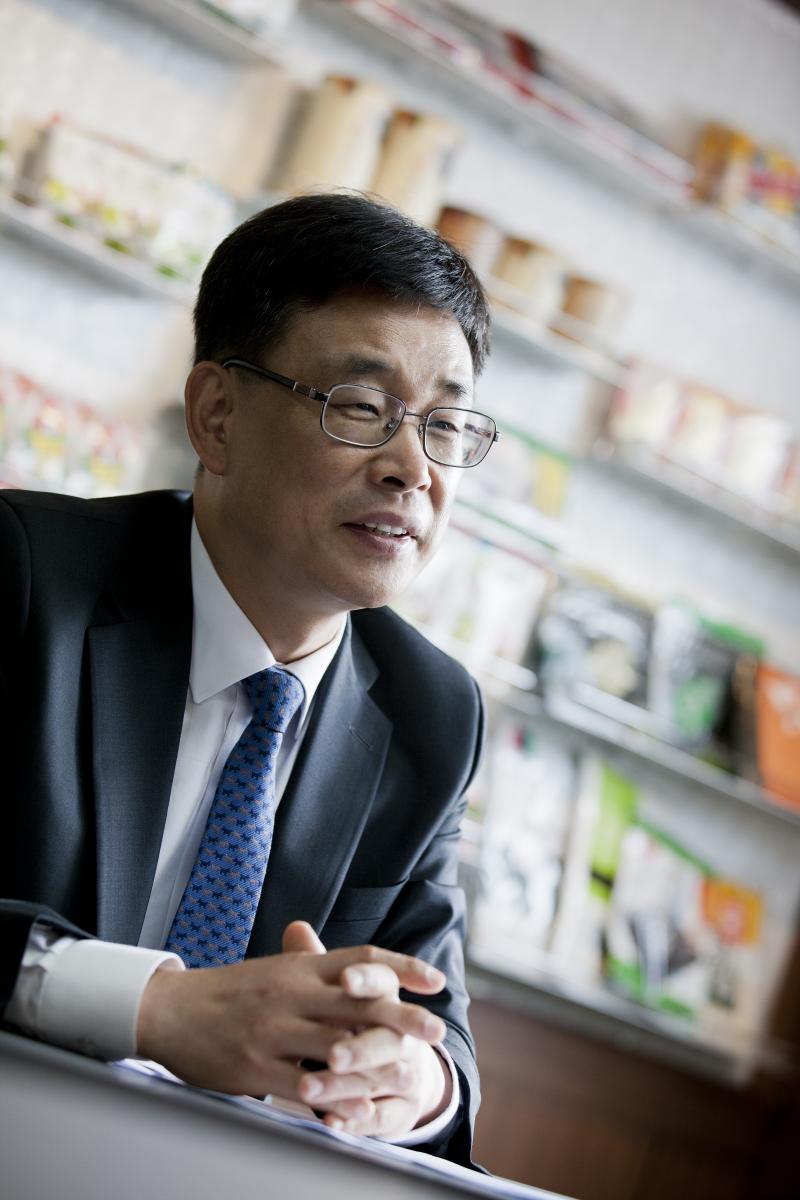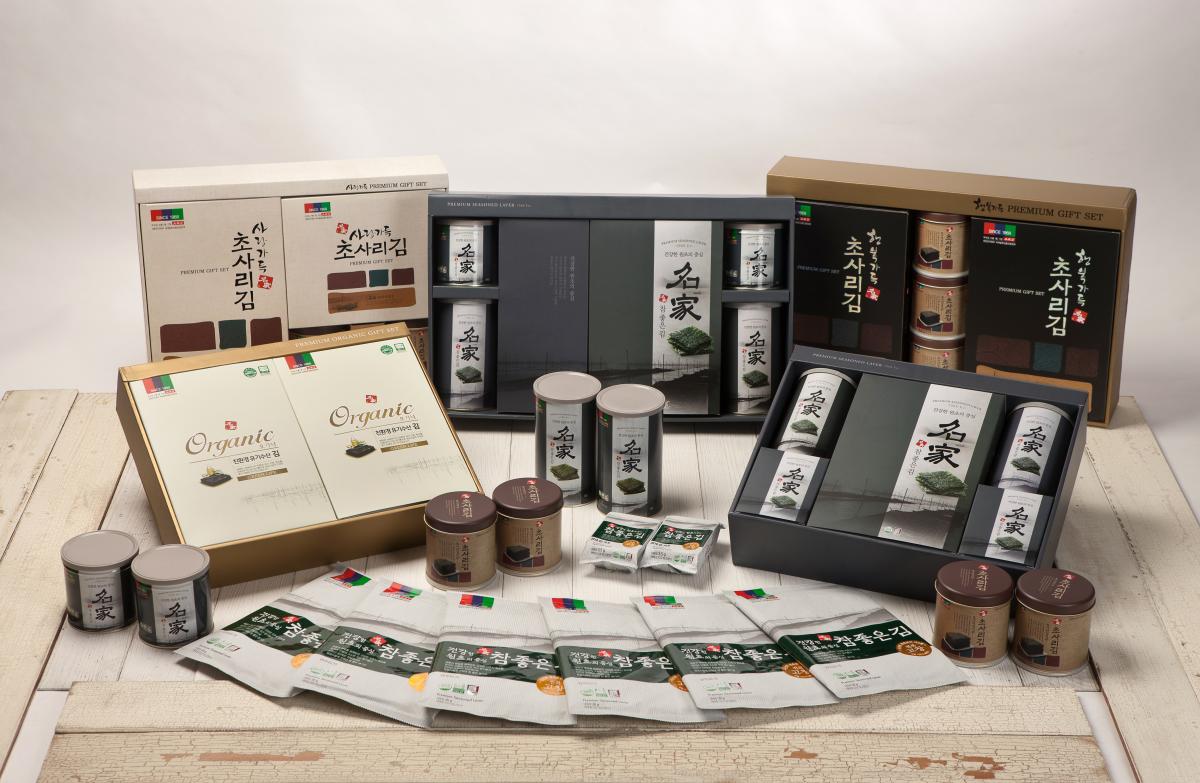THE CLEAN waters surrounding the Korean Peninsula contribute to the rich resources of fish, shellfish and marine products such as Gim or dried laver. The waters of Muan-gun, Jeonbuk have especially been touted in producing high-quality seaweed, a coveted ingredient for sushi and kimbab (Korean rice roll) dishes.
Samhae Commercial Co. Ltd. was on the right track when they first established their laver factory in 1968 in this fertile coastal location. The company was first in developing the acclaimed Korean seasoned laver, now a favorite and staple in local households. Aside from being a trendsetter in the laver market, Samhae is now the premier exporter of dried seaweed in the country. The company garnered the coveted US$30 Million Export Award from the Korea International Trade Association (KITA) in 2015, a first in the seaweed industry.
This one-on-one with Seoung Ho Yoo, Samhae Sales Support Team Leader reveals how the company made a name for itself in Korea’s seafood industry.

Seoung Ho Yoo is Sales Support Team Leader at Samhae Commercial Co. Ltd
It is rare for a seaweed factory to deal solely in one business model, but Samhae has not only thrived but led the market ever since its inception over 50 years ago. Can you tell us more about your company history?
I know it says that our company was established in 1968 but it is actually much older than that. Look at our company logo, it is a distinct ancient Korean text that says “Myoungga”. Myoungga is the name of our ancestral family who, taking advantage of the rich waters around Buan, first started harvesting seaweed a long time ago to make dried laver products. We have continued to share this rich heritage with the introduction of the very first Korean-style seasoned laver in Korea in 1982. In 1990, we moved our factory to Julpo Industrial complex in Muangun, Jeonbuk province. A little over a decade later, we opened our second factory in order to meet our ever-growing export market.
What is the size of the company in terms of manpower?
Samhae’s total manpower varies from season to season. Gim is produced from late December to mid-April of the following year. We usually employ 200 staff and personnel. At peak harvesting season, usually in the winter, our manpower goes up to 260 to 260 to accommodate harvesting and orders. We have to maximize production and expedite shipping at this time of the year as the quality of seaweed reaches its peak in terms of taste and nutrition.

Samhae Commercial Co. Ltd’s seasoned laver are popular in Japan, Thailand, the US, Russia and Brazil
Can you describe the process of making dried laver?
At Samhae, we handle all the production processes – from the harvest of the seabeds to the packing and distribution of the final Gim products. The bulk of our raw seaweed comes from our partners in the National Federation of Fisheries who reserve the best of the fresh laver harvest for our company. The wet bales are transferred to our warehouses where they are sorted, inspected and prepared for firing. Preparation and implementation of firing or drying of the seaweed is critical as it spoils quickly. At the start, the seaweed has 15% moisture, after firing, this moisture content is reduced to only 5%. This is extremely important as this procedure ensures that the dried laver will keep for a long time. The sheets are then separated and roasted in the roasting ovens. For the seasoned laver, the roasted sheets are sprayed with liquid seasoning of salt and sesame oil. Sushi laver and plain roasted laver are dried longer to achieve a lower percentage of moisture as it has to keep in storage longer than the seasoned sheets. After the roasting, the sheets are machine cut and hand packed in foil packaging, Ziploc bags or plastic packaging sealed in cans/gift boxes. Local and international marketing and distribution are also done in-house.
Is Samhae creative when it comes to product varieties?
As a pioneer in making Korean-style seasoned laver, we offer our seasoned laver in many forms. We have the mini lunch packs that are perfect for bite-size wraps as well as regular size sheets for making kimbap rolls. We manufacture crumbled laver, for sprinkling over rice, soups and stews and as an ingredient for fried rice or rice balls. These are also available in different seasonings such as Bulgogi flavor, roasted bamboo salt, and olive oil. We also offer fun flavors like cheese for seaweed crumble. We offer our roasted laver sheets in regular sushi roll size and in triangle roll sizes. Samhae also makes tiny shredded seaweed in both roasted and seasoned flavors. As well as seasoned laver, our company also makes dried sea mustard and dried kelp for wraps, soup and stock-making. Our newest line of products is our crunchy seaweed snacks with brown rice, almond and coconut fillings.
Can you tell use more about the ingredients used in flavoring your laver?
We source most of our ingredients like the salt, rice, sesame oil and Bulgogi flavor locally. Even the almonds we use are grown and produced in Korea. The bamboo salt that we use in our special Gim originates here in Korea. It was originally developed by Korean doctors and monks almost 1,000 years ago as a folk medicinal remedy for various illnesses. Sea salt is placed into three-year-old bamboo nodes and then roasted. This makes for a nutritious and tasty additive to our laver. For the other ingredients like olive oil and dried coconut, we get the best olive oil from Italy and desiccated coconut from the Philippines.
What is the production capacity of your factories?
Our daily output is 5,000 sets. Each set has 100 sheets. Production at our Buan factories is year-round. We never stop production, even in the winter season.
Are your factories fully automated? What are your certifications and awards?
From storing the seaweed bales to sorting, packing and distributing, our production processes are fully automated with only final inspection and packing of the sets into boxes done by hand. During our roasting process, we combine state of the art roasting ovens with strict supervision by our highly skilled technicians to get the drying and seasoning of our laver to the desired consistency. We used to acquire our production machines from Japan but now our company sources the machinery locally, with most of the equipment provided by Ilshin. We also developed specialized machinery like our laver precision cutting machine, which is currently awaiting patent certification.
All of this, from a proud history to continuing development of our processes to excellent quality control and a vision toward the future, has contributed to our company getting the distinction of being the biggest laver exporter in Korea. We received our first Industrial Package Prize award in 1986, and throughout the years Samhae has consistently been showered with awards and accolades. Our company has garnered half a dozen business awards from the Korean Ministry of Commerce, Industry and Energy (MCIE). In 1999, when seaweed laver companies were just starting to explore exporting their products overseas, Samhae received the KITA $5 Million Top Exporter Award. Our company has also received the 2000 Jeonbuk Merit of Export Award, MCIE label of world class product, and the Bronze Industrial award. Apart from these honors, we have consistently maintained our ISO 9001 certification on both of production facilities.
Where do you export your products?
Our biggest customer for our roasted laver is Japan. Decades ago, Japan was our sole customer for roasted and seasoned laver, known as “Nori”, that they used for their sushi wraps and Japanese dishes. Currently we export world-wide, not only Asia but to the American and European continents as well due to the advent of the healthy food trend that has swept across the globe. We count Thailand as one of our largest customers in Asia. Our seaweed snack items are very popular with our customers in the US, Russia and Brazil. We also export to Italy and just recently included Brazil and Netherlands as part of our export market.
With the rise of various competing seaweed companies in Korea, how does Samhae stay one step ahead of its competitors?
We always keep a finger on the pulse of what our customers need and what they want. We attend various trade and food expos world-wide. The first half of this year, we have participated in over four expos excluding the 2017 Seoul Food Expo. Before Korea started hosting food and trade expos, only housewives would come and visit our booth and inquire about our products. This has changed enormously. At the past couple of trade shows, we were seeing more and more industry buyers and business partners sitting down and hashing out deals and partnerships with us.
What is the future for Samhae?
New flavors! That is the future of seaweed. We are basically transitioning from the traditional flavorings of sesame oil, bamboo salt and Bulgogi to exciting, modern flavors like cheese, wasabi and teriyaki. We are optimistic that these new flavors will be a big hit as our current crunchy seaweed snacks.
Buty sportowe Nike













